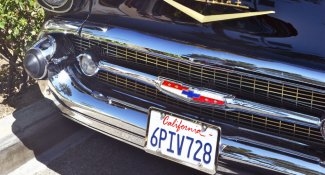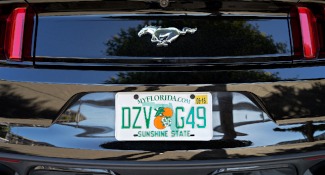The term 'pink slip' is a term that refers to the certificate of title of a vehicle. All vehicles must have a certificate of title to be legally driven or sold to another owner.
You will also need the title certificate if you intend on taking out an auto loan against its value. Your state's Department of Motor Vehicles (DMV) issues the car title to the vehicle's legal owner.
If you have the pink slip to a car and it is legally registered in your name, then it means you own that vehicle. Let's take a closer look at what is a pink slip and why it is so important.
What is a Pink Slip for a Car?
A pink slip is an important piece of paper to keep filed away in a safe place in terms of a car. Without breaking out the thesaurus, a pink slip and a car title are the same things. They are synonyms.
A pink slip is a slang term used to describe a vehicle's title, known as a certificate of title. It is a legal document that establishes its registered owner. The owner could be a business or an individual.
The Department of Motor Vehicles usually issues vehicle titles. However, the process of issuing the title, its appearance, and the exact information contained within the legal document may vary slightly from state to state.
What Information is on a Title?
Typically you can expect your certificate of title to state the following information:
The name of the car's legal owner. If there's a car loan on the vehicle, this should include the lienholder or lender. You will also find the legal owner's address.
The car's registered owner. This is normally the person using the car (if there's no loan on the vehicle, the car's registered owner and legal owner are the same).
The vehicle identification number. The VIN is a 17-digit string of both letters and numbers that is unique to each vehicle.
The car's make, model, and year of manufacture.
The car's registration information. This includes the license plate number.
The car's purchase price, its weight, and other tax-related information
The car's mileage at the time of sale (this applies for both new and used cars).
If a new car was bought using an auto loan, then the vehicle's title will usually stay with the lender until the loan is settled in full. Once paid, the new owner will take possession of the certificate of title, and the lender's information will no longer appear on the document.
Why Is It Called a "Pink Slip"?
According to American Title Loan, California certificates of title were called "pink slips" until 1988 because they were printed on pink paper. DMV officials adopted the pink paper because it kept owners from tossing their car title away as if it were an outdated vehicle registration.
Because California has traditionally been home to more cars than any other state, the popular slang term became widely known. The phrase "pink slip" also spread through the movies. In the 1950s, a whole string of movies depicted illegal street races in which the winner won the pink slip of the loser's car, referring to this as "racing for pinks" or "racing for pink slips." Eventually, the phrase stuck as an informal way to refer to a car's title.
Besides the fact that racing for pink slips is illegal in most circumstances, pink only makes an appearance as a supporting color on most states' vehicle titles. Many states use white paper to print a car's titles. Various colors are woven in to make it harder for counterfeiters as a security measure.
When Will You Need The Pink Slip?
A car's certificate of title isn't something you need daily; however, there are a few occasions where you may need to take it out of filing. Below are some instances when you may require your car's title.
If You Sell Your Car:
You will need your vehicle's title if you want to sell it, regardless of whether it is financed or not. Since the ownership will transfer from yourself to the new owner, the title will need to be updated with the new owner's details. During the change of ownership process, the title needs to be signed by both parties and updated with all the new supporting information related to the sale.
There is a section behind the title in most states to enter the transaction's details, including the new owner's information. In some cases, the new owner must take the car's title to their local DMV to have a new document issued reflecting their ownership of the vehicle. Some states may also require the use of a notary and additional supporting documentation, such as tax information and a bill of sale, before issuing the new title.
Remember, if your vehicle was financed with an auto loan, you would need to settle the loan first before you can sell the car and transfer the title. Should you need to sell the vehicle before paying the loan, then you will need to contact the financial institution for assistance with handling the transaction.
If You Give Your Car to Someone:
Similar to the selling process of a car, if you give your vehicle to another person, you need to update the certificate of title. Even though no money exchanges between the two parties, there may still be tax obligations on one or both parties. The title also needs to be updated with the particulars of the new owner.
If You Need a Title Loan:
In some cases, people may need a title loan. This is when the ownership of their vehicle becomes collateral. Title loans are beneficial for those people with little to no credit because the value of their car secures the loan they need. However, one must remember that if the loan is faulted on or not repaid, then the lender has the legal right to seize the vehicle to recoup their loss of the funds on the loan.
Buying a Car Through a Licensed Dealership:
If you buy a new or used car through a dealership, the sales staff will generally handle the necessary paperwork when transferring the ownership over to you. Unless you financed the vehicle, they will temporarily transfer the ownership over to the financial institution. The bank or credit union, in this instance, is listed as the lienholder. Since this organization has an interest in your vehicle, they appear on your pink slip.
What Is a Branded, Rebuilt, or Salvage Title?
According to Autoblog, a branded pink slip indicates that an insurance company declared the car a complete loss or "totaled" it. If a car carries a branded title, it sustained some significant damage. Some examples include a hail damage title, water damage title, and rebuilt or salvage title.
A salvage title indicates that the repairs needed for the damaged vehicle cost more than the car's market value.
Finally, a rebuilt title indicates that the car was totaled or had a previous salvage title but has since been certifiably repaired back to safe operating condition.
What If You Can't Find Your Pink Slip?
If you've lost your pink slip or it's been permanently damaged somehow, you need to replace it before transferring your vehicle ownership. Without your certificate of title, you have no tangible proof of ownership.
Each state mandates a different process for getting a duplicate title certificate. You may need to go to the Department of Motor Vehicles, provide details about the car, do some paperwork, and pay a fee for a new pink slip.
It's possible you may be able to apply for a duplicate title online or even by phone.


